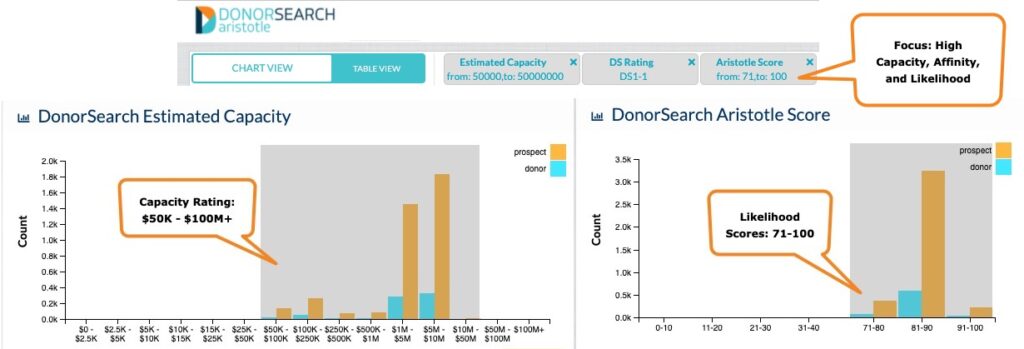
Prime Your Major Gift Portfolios to Produce
Major gift fundraisers succeed on the strength of their constituent portfolios. Consider that each constituent in a major gift portfolio is a relationship the gift officer must cultivate from initial engagement to the solicitation (and beyond–for life).
At the beginning of the fundraising year, gift officers and their managers should know which constituents on the list have the capacity and likelihood of giving enough money to meet the year’s fundraising goal.
Cultivation Stage Matters
Because it takes 12-18 months to reach the solicitation stage, each portfolio should include constituents who are in the early stages of cultivation–so they’ll be ready for the ask next year.
So, How many (and at what stages?) constituents should be in a portfolio?
Even though the long-held industry standard for major gift portfolios ranges from 75 to 150, it’s proven nearly impossible to connect with that many people in any meaningful way effectively.
Northwestern University held their MGO portfolios to no more than 40 active constituents and saw a 170% increase in asks, a 211% increase in gifts received, and a 595% increase in the amount raised.[1]
[1]Your major gift officers’ portfolios could be hurting their fundraising potential. EAB, 2017.
Portfolio Size and Structure
Given the experience of Northwestern and the expectation that you’ll need “more where those came from” when it comes to active major gift constituents, consider the following portfolio structure:
Active constituents (see definition above): 30-40
The gift officer has engaged the constituent on behalf of the organization and has defined their capacity and inclination to make a major gift (you and your institution determine the threshold amount of a “major gift”). Northwestern requires an ask amount, expected close date, and strategy for each active constituent.
Initial Engagement constituents: 25-30
The gift officer has determined their capacity and inclination to make a major gift and is in the early stages of engagement (only one or two interactions have occurred).
How to Prime Your Portfolios for Successful Performance
Whether you’re starting from scratch or working with an existing portfolio, here are six steps to building portfolios that perform.
- Screen your donor file to identify constituents with financial capacity and an affinity for philanthropy.
- DonorSearch delivers high-quality wealth data points and philanthropic histories along with estimates of capacity, gift amounts, loyalty, and the likelihood of a response–in each constituent screening.
- Apply AI/Machine Learning analytics to your constituent file to identify the constituents most likely to give in the next 12 months.
- DonorSearch Ai develops a custom model for each constituent file. The model produces real-time dynamic propensity scores, which measure each current donor’s engagement and the likelihood of making a gift shortly.
- The visualization tool will also show you the high-capacity non-donors in your file that are most likely to convert to becoming a donor.
- Select the constituents with the highest combination of affinity and capacity ratings for your major gift portfolios. These will be your portfolio’s “Active” constituents. NOTE: To keep each list to 40 constituents, consider filtering by an even higher DonorSearch Ai score than we used in the example (e.g., 85-100)
- DonorSearch Ai delivers your modeled constituent file in a data visualization tool, which you can use to instantly identify the constituents that will likely give and have the capacity to make a major gift by just clicking and dragging your mouse!
ILLUSTRATION: Constituents with Estimated Capacity of $50K+ and DonorSearch Ai Propensity Score of 71-100.

- Select the constituents with the same high capacity rating but a slightly lower propensity score for your Initial Engagement constituents.
- Develop a plan for further engagement and (ultimately) solicitation of the Active constituents in your list.
- Identify and schedule general “touchpoints” for the Initial Engagement constituents (e.g., invite them to events, send them a copy of your newsletter, send them emails with links to stories on your website, etc.).

PRO TIP: Because your constituent experience (activity, giving, etc.) data is added to DonorSearch Ai’s custom machine learning algorithm continually, you will see the impact of your engagement efforts with affinity scores that are dynamically changing. Use this benefit to “tune up” each gift officer’s portfolio.
When you pump up the constituents’ quality in your portfolio, you will swiftly focus on your best opportunities, make deeper connections with motivated donors, and see substantial results.
Want to know more about DonorSearch Ai?
Click HERE for a Demo
